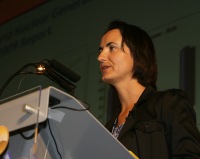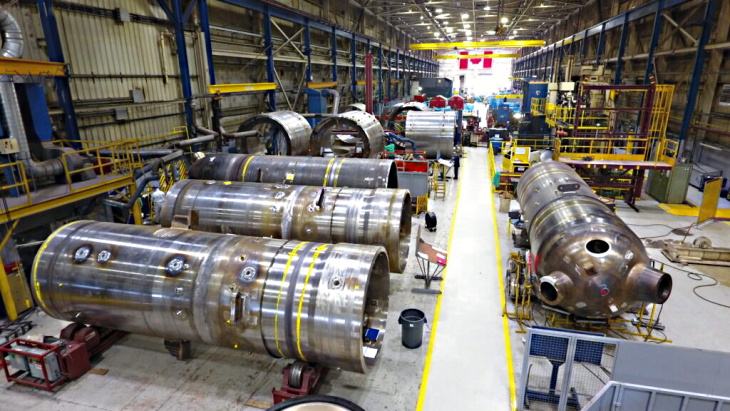World nuclear fuel markets are likely to suffer very little noticeable impact from events at Fukushima, according to the latest edition of the World Nuclear Association (WNA) biennial supply and demand report.
 |
| Anne Chauvin presents the WNA Market Report |
Revised scenarios for nuclear generating capacity in individual countries and areas have been incorporated into the report, feeding into three scenarios for world nuclear capacity up to 2030. The scenarios are based on differing underlying economic and political trends but are all described as "plausible".
The reference scenario, which includes an assumption that most countries will continue with their pre-Fukushima nuclear plans, sees nuclear capacity growing at an average 2.3% per year from its current 364 GWe to 411 GWe by 2015, reaching 471 GWe by 2020 and 614 GWe by 2030. The upper scenario sees 416 GWe by 2015, 518 GWe by 2020 and 790 GWe by 2030. Under both scenarios, the figures are slightly lower than in the previous edition of the report published in 2009.
More mines needed
The model used by the WNA to forecast reactor requirements has also been updated with reassessments of factors affecting nuclear fuel demand. Presenting the report at the WNA Symposium today, EDF procurement manager Anne Chauvin explained that capacity factors, enrichment levels and burnups are all trending upwards, and uranium requirements are affected accordingly. World uranium requirements, currently estimated at 63,800 tU, are expected to grow at a similar rate to nuclear capacity under the reference scenario, reaching 107,600 tU in 2030. This is little changed from the equivalent scenario in the previous report, although total requirements under the upper scenario, reaching 136,900 tU per year by the end of the period, are significantly down on the previous forecast.
Known uranium resources are more than adequate to satisfy reactor requirements to 2030 and beyond, the report notes, but the role of secondary uranium supplies (inventories, stockpile drawdowns and recycled materials) will remain important over the period. Nevertheless, beyond 2020, there is likely to be a substantial need for new primary sources of uranium supply, the report concludes, likening the magnitude of the build-up needed to meet both the reference and upper demand scenarios to the huge historic production expansions of the 1950s and the late 1970s.
| By the industry, for the industry The WNA market report is drafted by a team drawn from the association's member companies and includes contributions from industry players, large and small, including Areva, Cameco, Exelon and EDF. Information is gathered from WNA members but also through questionnaires sent to WNA member and non-member organizations active in the nuclear fuel cycle. Responses are compiled into regionally aggregated data by a firm of accountants, assuring respondent confidentiality and providing access to information which would otherwise be very difficult to acquire. |
Researched and written
by World Nuclear News




_69614.jpg)

_15447.jpg)





